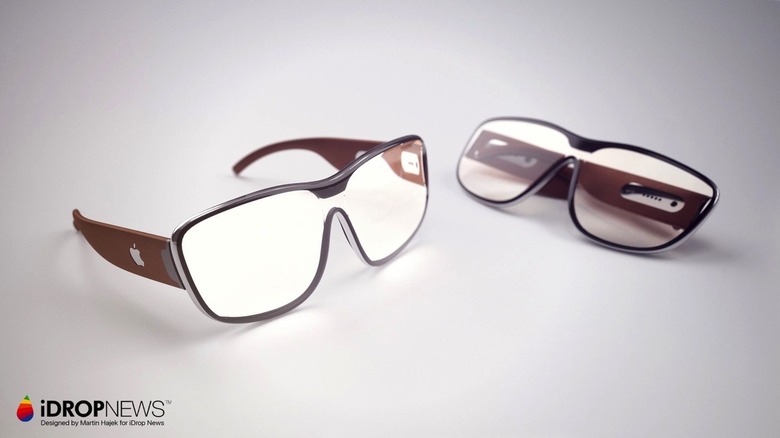Apple Isn't Even Trying Anymore To Keep Its Unreleased AR Headset A Secret
In the days leading up to Apple's iPhone 11 event, we learned that Apple is already testing some sort of augmented reality (AR) device that will work in conjunction with iPhones. Code in an iOS 13 beta as well as new icons suggested that the so-called Apple Glasses might launch sooner than expected, with some people speculating that Apple's "one more thing" announcement during Tuesday's iPhone 11 event might be about AR glasses. That didn't turn out to be the case, and Apple is yet to confirm any plans for an AR headset of its own.
Before the leak, the most bullish estimates said the Apple AR gadget might arrive in 2020 at the earliest, and there's no indication that Apple is getting ready to unveil it sooner than that. Now, a new discovery in iOS 13 code indicates that Apple might not even be trying that hard to conceal the active development of its first-gen AR headset.
It was developer Steve Troughton-Smith who posted the discovery, the same person who always seems to uncover gems about unreleased Apple products in Apple code. iOS 13 GM contains a readme file about how employees can run stereo AR apps on iPhone when you don't have access to your Apple headset. Apple headset?
This is likely a mistake, but one that confirms previous leaks that mentioned some of the code seen here, such as the StarBoard framework that's related to AR devices.
The developer also noted that Apple had time to remove all "Apple Tag" references from iOS 13, but somehow left the AR headset subsystems in place. Apple Tag, by the way, is the rumored product name for an unannounced Apple device that would work just like Tile, allowing users to find lost items that are attached to these tiny Tags. The iPhone 11 models all pack a new U1 chip that makes indoor positioning far more accurate.
What's interesting about the new findings when it comes to Apple's AR glasses, is that they paint a different picture of what we were expecting from the product. Rather than running its own iOS-derived operating system as was first rumored, the headset seems to be a passive display accessory of the iPhone, with the smartphone handling all the processing.
Again, it's unclear when Apple might launch this product or if the company is anywhere near delivering a finalized version of its AR headset.
